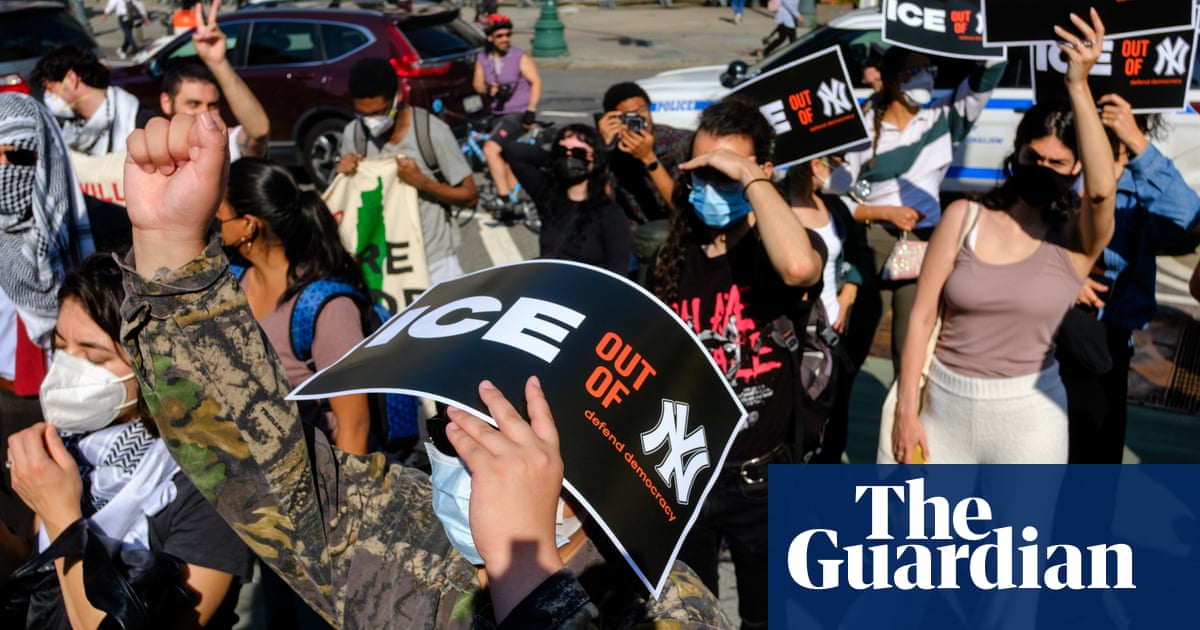Nationwide Protests Against Trump Administration’s Intensified Immigration Raids
Protests erupted across the United States in response to the Trump administration’s newly intensified immigration raids, particularly in Los Angeles, but the movement quickly gained momentum nationwide. Major demonstrations were reported in cities like New York, Chicago, Atlanta, Omaha, and Seattle, as thousands rallied against the federal government’s Immigration and Customs Enforcement (ICE).
The New York City Protests
In New York City, demonstrators gathered in Foley Square, where the atmosphere was charged with energy and determination. Thousands of attendees held signs with messages ranging from “ICE out of New York” to fervent chants questioning the police presence. One standout moment featured protesters chanting, “Why are you in riot gear? I don’t see no riot here,” highlighting the perceived excessive force being used against peaceful demonstrators.
Among the crowd was Shirley, a 29-year-old protester who expressed her outrage at the government’s actions, which she viewed as an affront to the nation’s values. Draped in a large Mexican flag, she articulated her personal connection to the issue: "I come from immigrant parents… it’s infuriating to see that this particular government is going into labor fields, taking people from construction sites, into industry, plants, into farms." Her words resonated with many, emphasizing that the backbone of the country is built on the hard work of immigrants.
Voices of Leadership
Councilmember Shahana Hanif of Brooklyn took to the stage to share her own condemnation of the administration, criticizing both Trump and local Mayor Eric Adams for their stance on immigration. “Mayor Adams has made it clear that he doesn’t care about working class people,” she asserted, accusing him of complicity with the federal government in their crackdown on immigrant communities. Her call to keep New York a sanctuary city and protect international students garnered enthusiastic support from the crowd, who echoed her demand to “Stop the attacks and assaults on our students!”
Chicago’s Response
In Chicago, the protests mirrored the intensity seen in New York. Thousands gathered outside an immigration court before marching through downtown, their chants of “No more deportations!” echoing through the city. The event took a perilous turn when a car drove through the crowd, narrowly avoiding colliding with protesters. Such incidents underline the tensions present during these demonstrations and the inherent risks participants face while voicing their dissent.
Solidarity Marches
Meanwhile, in metro Atlanta, hundreds of people marched along Buford Highway, expressing solidarity with the activists in Los Angeles. Similarly, in Omaha, the atmosphere was charged as demonstrators chanted “Chinga la migra,” a phrase that translates to “Fuck ICE.” This rally came on the heels of an immigration raid at a meat-packing plant that reportedly resulted in around 80 arrests, emphasizing the immediate impact of federal actions on local communities.
Not to be overlooked, a small but determined group of about 50 protesters gathered in Seattle, where they rallied outside the Henry M. Jackson Federal Building. Their demonstration included barricading driveways with e-bikes and scooters to obstruct Homeland Security vehicles believed to be transporting detained immigrants. This tactical move signified a growing commitment among activists to take direct action in support of their cause.
Upcoming Actions
The intensity of these demonstrations is poised to continue, with large rallies also reported in Dallas and Austin leading up to a significant protest planned for Saturday. An estimated 1,800 protests across the nation are scheduled to coincide with a military parade being held in Washington, D.C., in honor of Trump’s birthday. This coordinated effort speaks volumes about the resolve of individuals and groups committed to challenging the administration’s immigration policies.
As communities rally together across the nation, the protests represent not just a response to current policies, but also a reaffirmation of America’s identity as a nation built on the contributions of immigrants.


